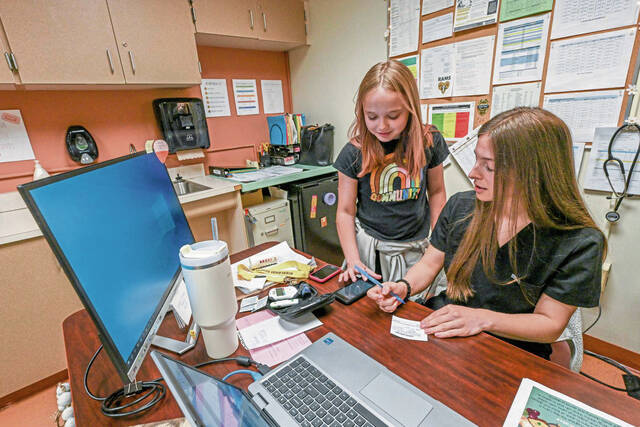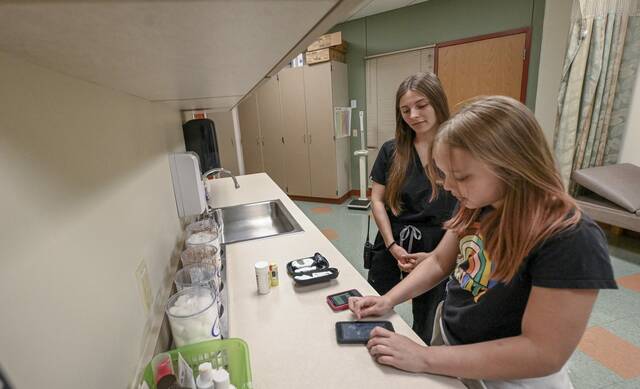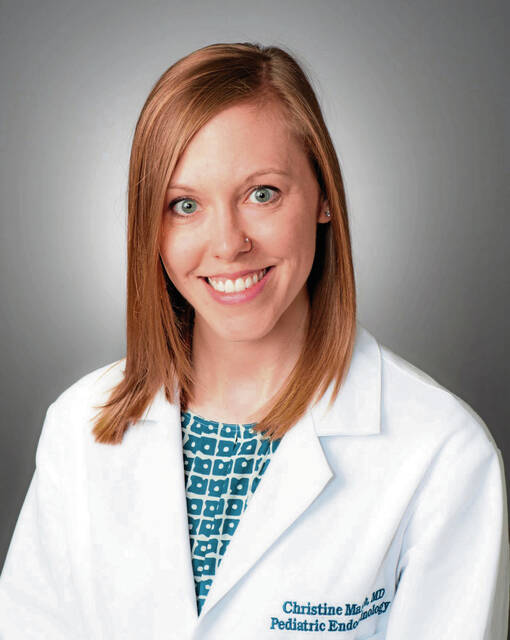Highlands partners with UPMC for pediatric diabetes study
Highlands Middle School nurse Aliza Zelina keeps individual baskets stocked with snacks and medical supplies for her students battling Type 1 diabetes.
“They come to me several times a day,” said Zelina, of the preteens at the Harrison school. “They are little kids who are learning to manage this illness. They need help.
“By the time they are in eighth grade, the goal is for them to manage it pretty independently.”
Highlands is one of eight school districts randomly chosen to participate in a UPMC Children’s Hospital of Pittsburgh study to facilitate better outcomes for students with diabetes.
Others include Penn Hills, Montour in Kennedy Township, Cornell in Coraopolis and Westmont Hilltop in Johnstown.
The two-year School-Partnered Collaborative Care Study, or SPACE, is run by pediatric endocrinologist Christine March. It’s aimed at children 6 to 13 who have had diabetes for at least six months.
“The reason we’re interested in schools is that children spend one-third of their time in school — a third of their care happens there,” March said. “Our primary interest is how to better work with different kinds of community support to improve care and outcomes.”
The districts are paid $1,000 a year for participating.
Type 1 diabetes happens when the body doesn’t produce enough insulin to balance blood sugar levels.
It affects 200,000 people younger than 20, according to the national Centers for Disease Control and Prevention. There is no known way to prevent the illness.
Diabetes can develop at any age. Research has shown an alarming increase in the rate of diabetes in young people.
In 2021, about 352,000 children and adolescents — or 35 per 10,000 — had diagnosed diabetes. This includes 304,000 with Type 1, according to the CDC.
From 2001 to 2009, there was a 21% increase in young people diagnosed with Type 1 diabetes, according to the website BeyondType1.
“Type 1 diabetes is one of the most common chronic conditions of childhood, and poor control of the disease is linked to difficulties with learning and academic performance,” March said.
“These challenges get more significant as children enter adolescence. Our goal is to help kids and families establish excellent diabetes skills before they enter adolescence.”
March said students with Type 1 diabetes are more likely to have school absences, and students may have frequent interruptions in their learning to manage blood sugars.
“We hope to learn whether participation in SPACE can help keep kids in the classroom more,” she said.
There also is hope that the study will lessen the social impact of struggling with a chronic illness.
“They have to watch what they eat, what they do,” March said. “They can be asked to wear devices for monitoring. It can have a psychological impact.
“This better leverages existing support systems to have the best care.”
At Highlands, the study will include four monthly, virtual meetings with diabetic students, parents, the school nurse and a member of the diabetes medical team.
The team will discuss treatment plans and track progress of individualized goals.
Data might include a review of blood sugar records and insulin dosing, education and academic or health-related referrals.
School nurses will be encouraged to work on these goals between virtual visits.
“We will talk about healthy habits and take a look at the menu plan,” Zelina said. “We also want them to recognize symptoms of low or high sugar levels.”
Amber Dean, Highlands’ student service director, said the study’s goal is to ensure that the collaborative care model truly benefits students, empowering them to better manage their Type 1 diabetes.
“Our district believes that by engaging schools, homes and medical teams, we can build a supportive network that prioritizes the well-being of our students,” Dean said.
The district has fewer than 10 students with diabetes.
Primarily, they work closely with the school nurse to implement an individual plan.
Zelina said that, depending on the age of the student, visits to her office can happen multiple times a day.
“They might feel symptoms coming on and come to me to do a finger stick and check their levels,” she said. “I give them a snack with 15 grams of carbs and then wait 15 minutes to check again.”
For younger students or those first diagnosed with diabetes, the work is more intensive, Dean said.
“The team works to create a plan, recognize symptoms and patterns and communicate with parents/guardians,” she said. “School nurses assist in teaching self-management skills as guided by the medical team, record and monitor for signs of high or low glucose levels, and administer medication under the doctor’s orders.”
While no special meal preparation is provided for students with diabetes, Dean said the food service staff plays a key role in providing nutrition information on daily choices, meal substitutes and snacks, as needed.
Participation in the district study is voluntary and requires parental/guardian permission.
“We are hopeful that this method of care will prove to be an effective way to bring the team together and improve the support to the school nurse, the student’s family and, most importantly, the student,” Dean said.
Tawnya Panizzi is a TribLive reporter. She joined the Trib in 1997. She can be reached at tpanizzi@triblive.com.
Remove the ads from your TribLIVE reading experience but still support the journalists who create the content with TribLIVE Ad-Free.



